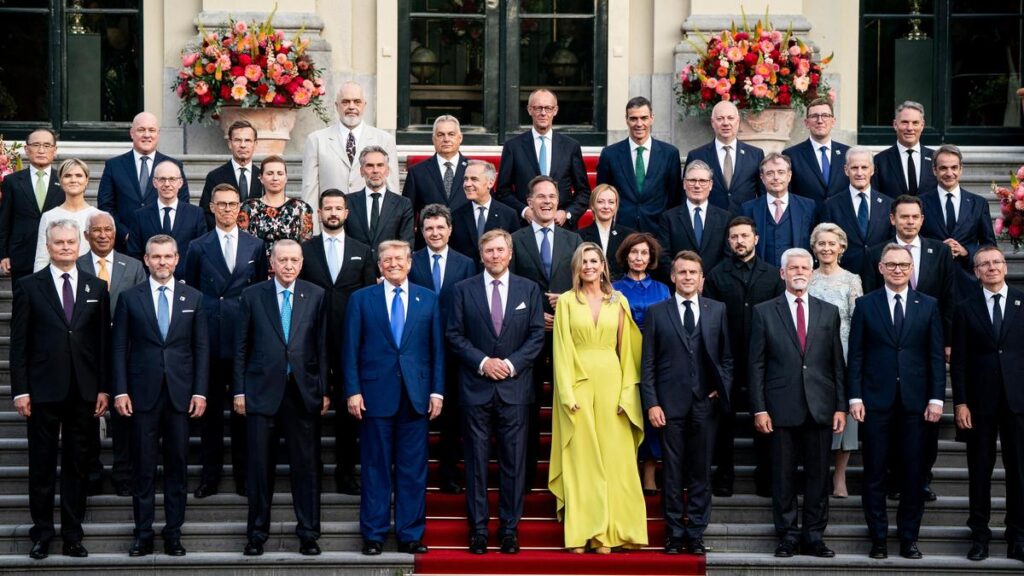It’s the photograph that illustrates Australia’s diminishing place on the world stage, in crystal clear resolution.
US President Donald Trump stands to the immediate right of hosts, Dutch King Willem-Alexander and Queen Máxima. French leader Emmanuel Macron stands to the couple’s left, beaming NATO Secretary-General Mark Rutte directly behind them.
There’s a rough hierarchy in the way the dignitaries are arranged in this so-called NATO “family photo”: the closer you are to the centre, the more important you, and your nation, are to the world order.
Off in the very far corner in the back row next to Estonian Prime Minister Kristen Michal stands Australia’s representative, Deputy Prime Minister and Defence Minister Richard Marles.
If this is a family photo, Mr Marles is the second cousin everyone forgot was coming.
Mr Marles’ awkward presence at The Hague for the NATO summit comes after Prime Minister Anthony Albanese’s hopes of meeting for the first time face-to-face with Donald Trump were dashed when the President skipped out early of last week’s G7 meeting in Canada to deal with the ongoing Iran conflict.
There had been talk Mr Albanese would try his luck again this week in the Netherlands, but ultimately, the risk of embarrassment should he be stood up for a second time outweighed the advantages.
Instead, Mr Albanese spent Wednesday talking child care in Launceston, campaigning with Tasmanian Labor leader Dean Winter ahead of the State’s July election.
When he does eventually get that long-awaited face time with the President — potentially in September — Mr Albanese will no doubt face considerable pressure to dramatically increase Australia’s defence spending.
Australia currently spends about 2 per cent of its GDP on military spending, and is on track to increase that to 2.3 per cent by 2033. US Defence Secretary Pete Hegseth has called on Australia to up that to 3.5 per cent — a massive boost but still far below the 5 per cent being demanded of NATO members.
It’s likely that those NATO members will agree to that demand, if leaked texts from Mr Rutte to Mr Trump are anything to go by.
In the messages, published by the Trump camp to social media, Mr Rutte tells the President that his pressure had led to a “really, really important moment for America and Europe, and the world”.
The texts, in which Mr Rutte employs many of Mr Trump’s own linguistic conventions, could be construed as embarrassing brown-nosing.
But they’re also the sign of a pragmatist at work; one who has decided it’s worthwhile to sacrifice a little of his own dignity for the greater good. That’s a sacrifice Mr Albanese doesn’t appear ready to make.
Other leaders have managed to find ways to make a relationship with Mr Trump work, without resorting to mortifying flattery (at least publicly).
British Prime Minister Sir Keir Starmer shares much in common with Mr Albanese ideologically. Presumably he holds many of the same views on Mr Trump himself. Yet Mr Starmer has not faced the same difficulties in his relationship with the President.
Australia needs to find a way to make this relationship work, or risk being pushed out of frame.
https://thewest.com.au/opinion/editorial-nato-family-photograph-reveals-awkward-truth-about-our-nations-standing-c-19149898


